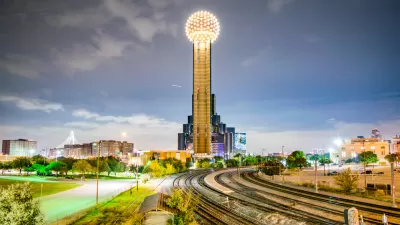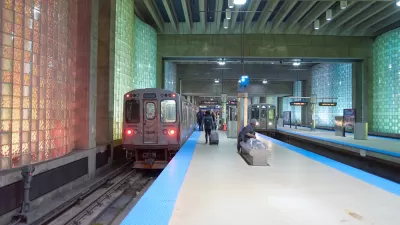So far, the Hyperloop's biggest supporters have made a lot of big promises, but continue to fall short on deliverables.

"The self-proclaimed transportation of the future is running late, short and slow," report Georgia Wells and Eliot Brown.
A public test of the Hyperloo technology, touted by Hyperloop One as its "Kitty Hawk Moment," was originally promised before the end of 2016. Hoperloop One "later put off the deadline to March 31, which it also missed. Last month, Hyperloop One’s general counsel said at a public hearing the company plans to hold a public test of a prototype "by May or June,'" according to the article.
"Meanwhile, [Hyperloop One] has slashed the length of the test track for the prototype by more than 80%, meaning the technology won’t be able to reach the planned top speed of about 750 miles an hour, previously a key feature of the planned public display.
Hyperloop's media momentum picked up last May, when Hyperloop One pulled off a two-second demonstration in the Nevada desert, but very recently national publications have started to push back on the ambitious delivery schedule and fantastical promises made of the still unrealized technology.
[The Wall Street Journal article might be behind a paywall for some readers.]
FULL STORY: Hyperloop One Taps the Brakes on Testing

Trump Administration Could Effectively End Housing Voucher Program
Federal officials are eyeing major cuts to the Section 8 program that helps millions of low-income households pay rent.

Planetizen Federal Action Tracker
A weekly monitor of how Trump’s orders and actions are impacting planners and planning in America.

The 120 Year Old Tiny Home Villages That Sheltered San Francisco’s Earthquake Refugees
More than a century ago, San Francisco mobilized to house thousands of residents displaced by the 1906 earthquake. Could their strategy offer a model for the present?

Austin Launches $2M Homelessness Prevention Fund
A new grant program from the city’s Homeless Strategy Office will fund rental assistance and supportive services.

Alabama School Forestry Initiative Brings Trees to Schoolyards
Trees can improve physical and mental health for students and commnity members.

NYC Outdoor Dining Could Get a Re-Do
The city council is considering making the al fresco dining program year-round to address cost concerns from small businesses.
Urban Design for Planners 1: Software Tools
This six-course series explores essential urban design concepts using open source software and equips planners with the tools they need to participate fully in the urban design process.
Planning for Universal Design
Learn the tools for implementing Universal Design in planning regulations.
Ada County Highway District
Clanton & Associates, Inc.
Jessamine County Fiscal Court
Institute for Housing and Urban Development Studies (IHS)
City of Grandview
Harvard GSD Executive Education
Toledo-Lucas County Plan Commissions
Salt Lake City
NYU Wagner Graduate School of Public Service




























